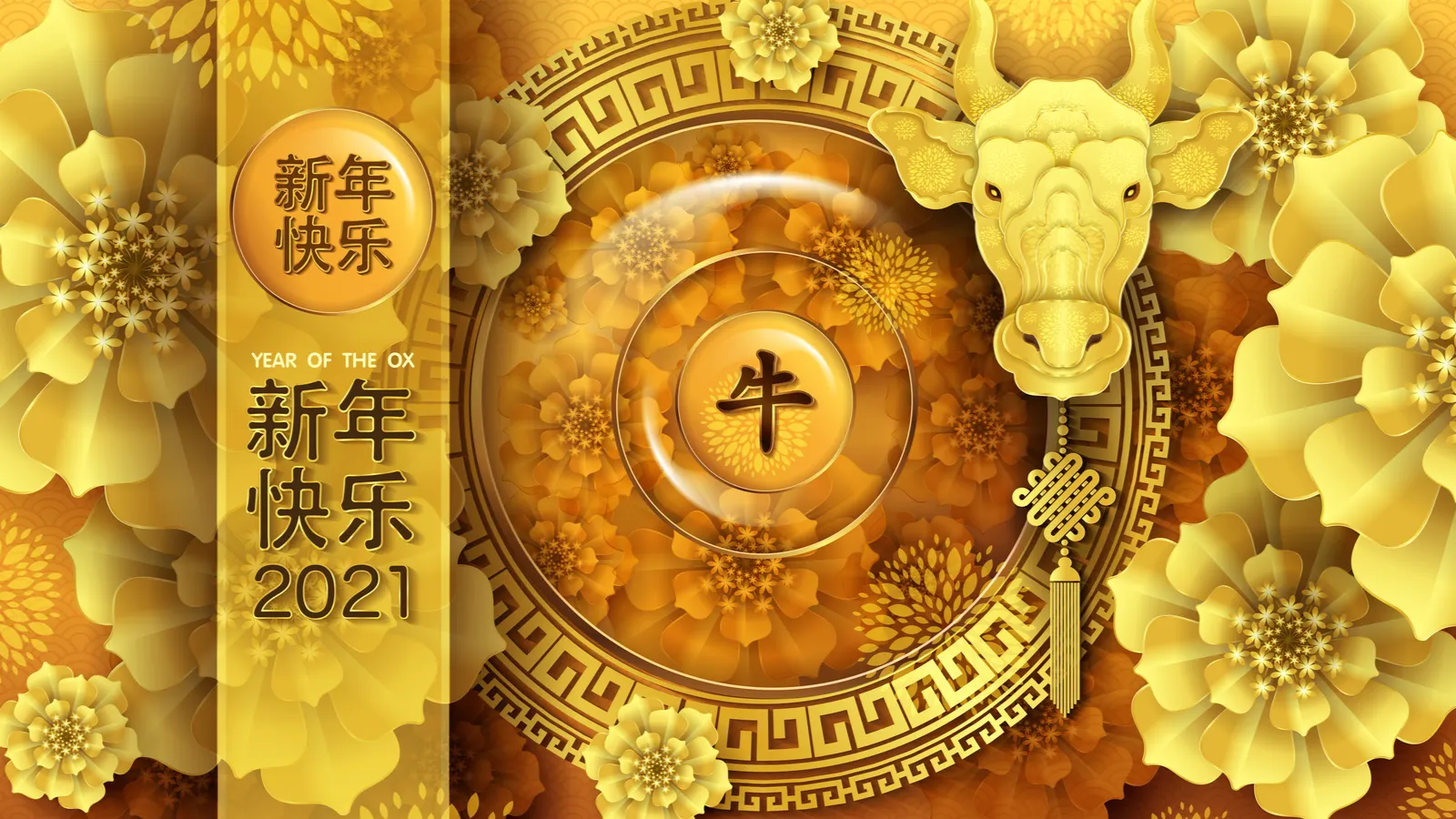We do the research, you get the alpha!
The signs of the Chinese zodiac must be created by the God of Wealth, for among the 12 animals chosen, the bear is nowhere to be seen. The ox, however, which a somewhat, um, modified bull, is the second sign of the Chinese zodiac.
Significantly, Chinese New Year, which began Friday, is the Year of the Ox, and it has already been off to a bullish start. Even the amount of red packets your correspondent has received on Crypto WeChat saw a decent increase in size. People are spending fiat to pray for good fortune in the crypto world.
However, a bullish start doesn’t necessarily mean a bullish year. The last Year of Ox was in 2009 and the trauma from that financial crisis has yet to recede from memory.
Therefore, instead of being purely bullish, this week’s da bing looks at six somewhat ambiguous trends that could continue and widen in the new year. By the way, the number six is an auspicious number that denotes smooth sailing. Whether that ends up being the case, of course, is oxishly difficult to predict.
China’s big mining rig manufacturers could finally IPO
Mining rigs producers are the gatekeepers of crypto network’s supply chain. A bullish market starts with strong demand from miners to build more farms. Indeed, Canaan Inc., the Beijing-based mining rig manufacturer, announced a positive financial outlook for 2021 after securing an order of more than 100,000 units of bitcoin mining machines from a North America customer.
Canaan’s stock price has also enjoyed a bullish run, reaching its all-time high after a year of disappointing financial performance and an investor lawsuit.
If Canaan becomes the new darling crypto child of the stock market, it will clear the way for potentially momentous debuts of its competitors, Bitmain and Antminer. Reports indicated that Bitmain’s uniquely signature AntMiner series have already sold out, and the new batch won’t arrive at until May 2021. That’s a good problem to have.
On top, now that the dust has settled between Bitmain’s two co-founders, the next milestone for the mining giant is its debut on Wall Street. Given Bitmain’s strong financial performance and a frenzied stock market, Bitmain could be the real bull in the Year of the Ox.
Institutional interest will continue to surge
Just like in the west, where institutions sparked much of the recent BTC bull run, demand from institutions in Asia is strong—and we’re seeing that demand in the good old financial center of Hong Kong.
From Hong Kong’s first regulated bitcoin fund Arrano Capital, to Henyep Group’s recent expansion, to crypto via Q9 Capital, the world’s second-wealthiest city is opening its eyes to crypto investment. For example, OSL is a Hong Kong-based, institution-focused, digital-asset platform that provides prime brokerage, custody and exchange, was the first one to obtain regulatory approval to offer crypto services from the Hong Kong regulator, the Securities and Futures Commission (SFC).
“From what we’ve seen on the desk, most of the institutional flow over the past few months is still predominantly from the US. But we have seen an increase in flows from Asia-based family offices and HNWIs looking to add BTC to their portfolios,” said Annabelle Huang, a partner at Amber Group, a Hong Kong-based crypto finance service provider.
Even Babel Finance, a crypto bank that suffered from a whistleblower’s report last year, has pivoted its business model to being a prime brokerage. The institutional pie will likely only grow bigger.
China will wake up to the DeFi Multiverse
China was late to the DeFi game but will be catching up quickly in 2021. However, China’s DeFi play will also have its own distinctive characteristics
First and foremost, China embraces the multi-chain narrative more than the west. Its DeFi adoption will reflect that belief. One prominent example is the rise of Polkadot, the public blockchain that has attracted Chinese developers, entrepreneurs and speculators to build and trade. Near and Filecoin are two other blockchains that have captured Chinese mindshare. However, building DeFi doesn’t mean most of these blockchains are empty blocks
Secondly, China’s DeFi innovation will have traces of Bitcoin. For example, both Poolin, one of the largest Bitcoin mining pools, and Binance have launched hashrate tokens that bridge proof-of-work (PoW) mining and yield farming. Investors can earn yields as these tokens represent real-world hashrate—but they can also earn extra rewards by staking the tokens in liquidity pools and earn governance tokens or WBTC.
DeFi products such as the BoringDAO aim to “turn all other blockchain into layer two of bitcoin.” It’s launched by Chinese miners who are hardcore bitcoiners, but also see the merits of DeFi. I imagine that more miners will join the not-so-boring DAO.
Centralized exchanges will continue to dominate
The year 2020 proved to the world that, despite lacking innovation and being late to the DeFi game, crypto Chinese-led exchanges such as Binance, Huobi and OKex, demonstrated how quickly they could play the catchup game. From Binance’s Binance Smart Chain to Huobi’s HECO, centralized exchanges introduced the concepts of DeFi to millions of Chinese crypto retail traders who are now proud farmers. BinanceSmartChain, in particular, has seen phenomenal growth with its Ethereum DeFi copycats
In addition, the exchanges, with a war chest of capital, have poured resources into DeFi innovation—either through investment, or incubation.
Granted, many may have argued that money doesn’t buy you real innovation. But for Chinese retail to access western crypto services, someone has to play the intermediary role. The centralized exchanges have done a phenomenal job and will continue to be the bridge.
Even more DCEP will be airdropped, all over
Criticizing the Fed is a known hobby among crypto communities worldwide. However, a comparison between US and China’s money supply indicates that the latter has used up more ink during the past few years. Since the Great Recession, China has been printing money, as can be seen from the price of household staple foods such as spring onions, soy sauce and pork. Inflation has kicked in.
Money printing is a one-way street. China will not and cannot stop such endeavors. However, this time, it can inject, quite literally, digital money into the economy through its central bank backed digital currency. So far, DCEP has only been deployed in certain cities, with specific use cases. However, it has the potential to penetrate into every household’s daily life, replacing existing fintech giants such as Alipay and WeChat Pay.
Besides serving its domestic clients, DCEP was born to internationalize the Chinese RMB. The government made one more step in that direction by launching a joint venture with SWIFT and the digital currency research institute of the People's Bank of China (PBoC). Though scant data has been released, the firm has a star team of board members including Mu Changchun, the head of the PBoC's digital currency research institute.
It's not a reach to suggest that DCEP could be airdropped outside of China in the not too distant future.
Regulations will continue to tighten
The last and perhaps least sanguine potential trend of 2021 relates to China’s tightened crypto regulations. Last year was a tough one because miners and investors alike have seen their accounts frozen or blocked from the domestic financial system, once their accounts were identified as associated with crypto.
Nicknamed “waves of frozen cards,” the trend intimidated newcomers from entering the market, which contributed to China’s stagnant crypto market size
Will 2021 be different? Perhaps not. The Chinese government is still sensitive to untraceable capital outflow from China abroad. Even more worrisome is that, as western countries legalize and engage in healthy debate over crypto, China—with its centralized DCEP, and unplugged to the international crypto market—could be left behind. In many ways, this was how the modern Internet has played out in China.
Do you know?
“白嫖” means “enjoying without paying the price,” or “freeloading” in Chinese. It has been adopted by the crypto community as a way to describe degens farming crazy APY by doing nothing. The phenomenon became particularly widespread as the exchanges launched their own blockchains and copied DeFi projects to attract liquidity.





